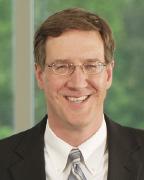Public/private partnerships (P3's) bring together entities that could not develop a project alone. A government organization teams with one or more privately-owned companies to develop a project that meets an identified public need. Each brings important elements to the table and, ultimately, they need each other to move the project forward. The public sector partner needs the leadership, experience, and capitol of the private-side partner and the private partner needs public investment in infrastructure to ensure a successful project. If the public and private entities work well together - respecting each other's roles and sharing a common vision - the P3 is a terrific option.
P3's in Construction - How Does This Joint Venture Affect the CM?
P3 projects are typically large and multi-faceted - otherwise, they might not require the expertise of multiple groups. There are oftentimes several contractors onsite performing different elements of the project simultaneously - all under separate contracts with the public or private partners. This can saddle each contractor with the responsibility to ensure safety and productivity onsite with little authority to control the work of others.
With so many moving parts, managing daily operations while keeping a big picture outlook can be difficult, so the CM must be flexible, organized, proactive, and an excellent communicator. These traits are crucial for any construction project, but with a P3, their importance is heightened. The CM must work carefully to meet the needs of each stakeholder, while helping to ensure that the entire project - not just its own work - is completed on time and within budget.
The Contractor's Role -
Storrs Center
Storrs Center, a new mixed-use town center in Mansfield, has been in the works for decades. The Town of Mansfield and the UConn identified a need for a commercial center in the 1960s; the project details took shape in the mid-1990s. Storrs Center is a public/private partnership, coordinated by the Mansfield Downtown Partnership and developed by its master developer Leyland Alliance and Leyland's partner EdR. Leyland's expertise is in creating sustainable mixed-use town centers across the country; EdR is a REIT that specializes in developing collegiate housing. Their combined proficiencies were exactly what Mansfield and UConn needed to make Storrs Center a reality.
The P3 dynamic created several unique challenges for Erland Construction. As CM, we were tasked with building the apartments and retail spaces, but the adjacent public parking garage and road work was performed by other contractors. These contracts were held by the Town of Mansfield, so their work and schedule was not contractually controlled by Erland.
Erland acted as a de facto manager of the entire site to ensure that our work would get completed on time. The other construction - particularly the road work - was carefully coordinated with our daily operations and at times limited our access to the buildings. Our field superintendents proactively created a master site schedule and met with the road work foreman daily to coordinate activities and avoid any work stoppages caused by overlapping priorities.
The completion of Phase 1A - two 5-story buildings with retail and restaurants on the first floor and market rate residential units above - was timed around the start of the 2012/2013 academic calendar. The residential units were 100% leased well before the August occupancy date, so being late was never an option. Despite a month delay at the start; limited control over the other work; balancing the interests of multiple owner groups; and several late retail leases potentially delaying base building completion, Erland finished this project on time. Phase 1B is well underway with an August occupancy planned.
Eric Greene is VP of Erland
Construction, East Windsor, Conn.
Tags:









